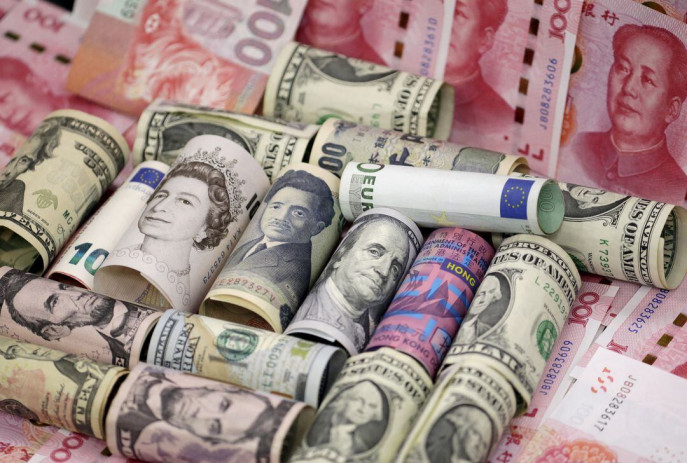
De-dollarisation embodies a profound paradigm shift that has the potential to substantially reshape the character of the world’s financial system in the years ahead
In addition to diversifying their reserves into gold or other currencies, countries are reducing their dollar dependency by employing local currencies in international transactions. Photo: Reuters
“>

In addition to diversifying their reserves into gold or other currencies, countries are reducing their dollar dependency by employing local currencies in international transactions. Photo: Reuters
De-dollarisation, signifying the diminishing dependence on the US dollar as the preeminent global reserve currency, has garnered increasing attention from economists and policymakers. The prolonged dominance of the US dollar in the world’s currency reserves, facilitated by central banks worldwide for trade and valuation, has led to increasing scrutiny as its sustainability wanes.
The International Monetary Fund’s data for the first quarter of 2023 indicates that the US dollar retains a 59% share of allocated currency reserves, overshadowing the Euro, which holds just under 20% and the Japanese Yen, hovering at approximately 5%. Notably, this primacy has steadily eroded from over 70% in 2001.
The dwindling prominence of the dollar has precipitated contemplation of de-dollarisation, with a pronounced emphasis on the imperative for central banks globally to explore alternative reserve currencies to mitigate their reliance on the dollar. This provokes the critical question: which alternative currencies are suitable for official central bank reserves?
Traditionally, the Euro, Yen and British pound sterling have been regarded as plausible alternatives to the dollar. However, despite the dollar’s depreciation, these alternatives have not augmented their share of reserve allocations.
China has been a major proponent of de-dollarisation and is working to make the renminbi a more valuable reserve currency. The renminbi, championed by China to emerge as a more influential reserve currency, has made some inroads, yet its global reserve share lingers below 2.5%. Concerns persist due to China’s capital flow restrictions and exchange rate controls.
Nonetheless, emerging market currencies, such as the Australian dollar, Canadian dollar, Swedish krona and South Korean won, have substantially benefited from the shift away from the U.S. dollar. Furthermore, central banks worldwide have been accumulating gold reserves at an accelerated pace, with demand for gold surging by 152% year-over-year in 2022, marking the highest level since 1950.
Despite the dollar’s declining share in central bank holdings, it remains the predominant reserve currency.
The ramifications of a more substantial shift away from the dollar in the global financial system remain challenging to gauge. Historically, the United States has relied on the dollar’s reserve currency status to finance significant deficits in domestic and foreign trade. If central banks worldwide opt to curtail their accumulation of substantial dollar reserves, the US could relinquish this financial flexibility.
The burgeoning prominence of de-dollarisation has been emphasised by geopolitical events, such as the conflict in Ukraine. Sanctions and the freezing of Russia’s currency reserves underscore the coercive power of the dollar, likely motivating other nations to seek alternatives.
In addition to diversifying their reserves into gold or other currencies, countries are reducing their dollar dependency by employing local currencies in international transactions. For instance, China has forged agreements to use its own currency in trade with countries like Saudi Arabia and Brazil, while also utilising the renminbi instead of the dollar for significant commodity purchases from Russia.
Speculation has arisen regarding the possibility of the BRICS nations (Brazil, Russia, India, China and South Africa) developing a currency to rival the dollar’s global dominance. However, no concrete plans exist as of now.
Nations have various options to reduce their reliance on the dollar, such as diversifying foreign exchange reserves, entering into currency swap agreements or allocating reserves to other currencies.
Nevertheless, the dollar’s status as the preeminent global reserve currency, while facing challenges, presents an intricate dilemma. The path forward involves a complex interplay of economic, geopolitical and financial factors, making it arduous to predict the consequences of a more extensively de-dollarized global economy.
While de-dollarisation may level the economic playing field for countries outside the US, there is no immediate and viable replacement for the dollar at the epicentre of the global financial system.
Prominent advocates of de-dollarisation, notably China and Brazil, have compelled the international community to seek alternatives to the dollar. The US has historically leveraged the dollar’s supremacy to advance its economic interests globally, propelling other nations to explore alternatives. The dollar’s enduring territory as the primary reserve currency is not guaranteed, as historical trends suggest it may not endure indefinitely.
In summation, de-dollarisation has engendered a transformative shift in the global financial landscape. The US dollar remains a pivotal player, yet nations worldwide are fervently exploring strategies to reduce their reliance on it.
The repercussions of such strategies for the world financial system and the US economy continue to be a subject of rigorous debate and analysis, as this trend gains momentum.
De-dollarisation is more than nomenclature; it embodies a profound paradigm shift that has the potential to substantially reshape the character of the world’s financial system in the years ahead.
Sketch: TBS
“>

Sketch: TBS



